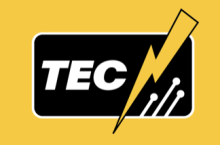
There’s a belief out there that households don’t really want or need more than a basic broadband connection, much less gigabit connectivity. This mistaken impression especially affects rural areas, where observers point out that a resident may have more fingers on their hand than Megabits per second (Mbps) on their current Internet connection, so surely they’ll be satisfied with a bump up to broadband speeds of 25 or 50 Mbps.
However, in our experience at MuniNetworks.org, demand for high-speed connectivity is actually quite robust in rural areas where the infrastructure exists. We’ve heard from rural cooperatives that many of their fiber network subscribers opt for higher speed tiers and that gigabit take rates near 30 percent in some instances. This suggests rural areas are much more likely than more urban areas to opt for tiers above the lowest cost option.
Even if the majority of rural subscribers don’t need the very highest broadband speeds, it’s important to note that the demand is there and will certainly continue to grow. As federal and state governments invest in rural broadband deployment, they must ensure that the networks they’re subsidizing can meet current and future needs.
Co-ops Feed Need for Speed

Last month, we spoke with representatives from another electric cooperative, Oklahoma Electric Cooperative (OEC), for episode 398 of the Community Broadband Bits podcast. They told us that many of their members also choose to subscribe to above-baseline speeds. The co-op only offers two speed tiers on its fiber network, 100 Mbps or 1 gigabit, and nearly 30 percent have selected the gigabit tier. The relatively high take rate for gigabit speeds isn’t a result of aggressive marketing or promotional offers. “We're not pushing either package,” explained David Godspeed, president of OEC Fiber. “I'm pushing the experience. I'm pushing the service.”

Of course, these are just a few data points, not an exhaustive survey, but the bigger picture is still clear. Rural communities want true high-speed connectivity, and unlike bankrupt monopolies (cough, cough, Frontier and Windstream), rural co-ops are ready to meet that demand.
Gigabit for Today and Tomorrow
We can speculate as to why rural co-op members subscribe to the higher speeds. Perhaps farmers want to pursue precision agriculture applications, or small business owners and remote employees need better connectivity to work from home. Maybe it’s because the physical distance of rural areas make completing routine tasks in person, like doctor visits and check deposits, more time consuming, making the convenience of telehealth and online banking that much more alluring.
Or it could simply be the result of releasing pent up demand for connectivity in rural communities. Goodspeed compared connecting to a new fiber network to upgrading from the old family car:
We can all remember our first car, and it was probably our brother's or sister's. And it was a hand-me-down and you got coat hangers with the door locks and you had everything else. But when you got your first big-boy or big-girl job and you went and bought that car, you just said, "Holy cow, I can go really fast . . . I'll never have to look back again.”
He continued:
I think that what's happening is that people have been so deprived of having an experience in the home, whether it's doing homework with the kids or watching Netflix — which is something we all take for granted, but some people have never had that experience. And I think they just said . . . “You're telling me that I can have that kind of experience in the home and never have to worry about my Internet speeds or anything like that ever again? I'm taking it."
We build broadband networks to meet future not present needs because demand will inevitably rise. This is especially true in rural areas where construction cost per subscriber is high and it’s not feasible to replace the network every several years. Rural subscribers are already signing up for gigabit speeds at high rates, and the only technology that has been proven to meet that need in rural areas with room to grow is fiber. We should keep that in mind as the FCC prepares to invest $20.4 billion in rural broadband expansion through the Rural Digital Opportunity Fund and state agencies continue to manage their own broadband grant and loan programs.
"View down Main Street in Ahoskie, facing west" by Wikipedia user Indy beetle. Licensed under Creative Commons Attribution-Share Alike 4.0 International License (CC BY-SA 4.0).









